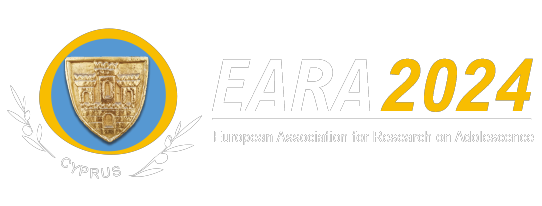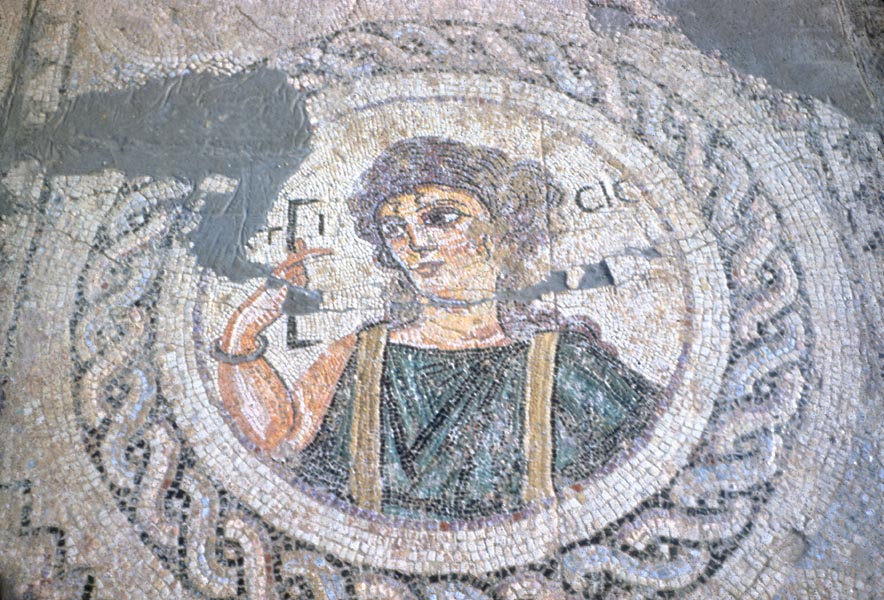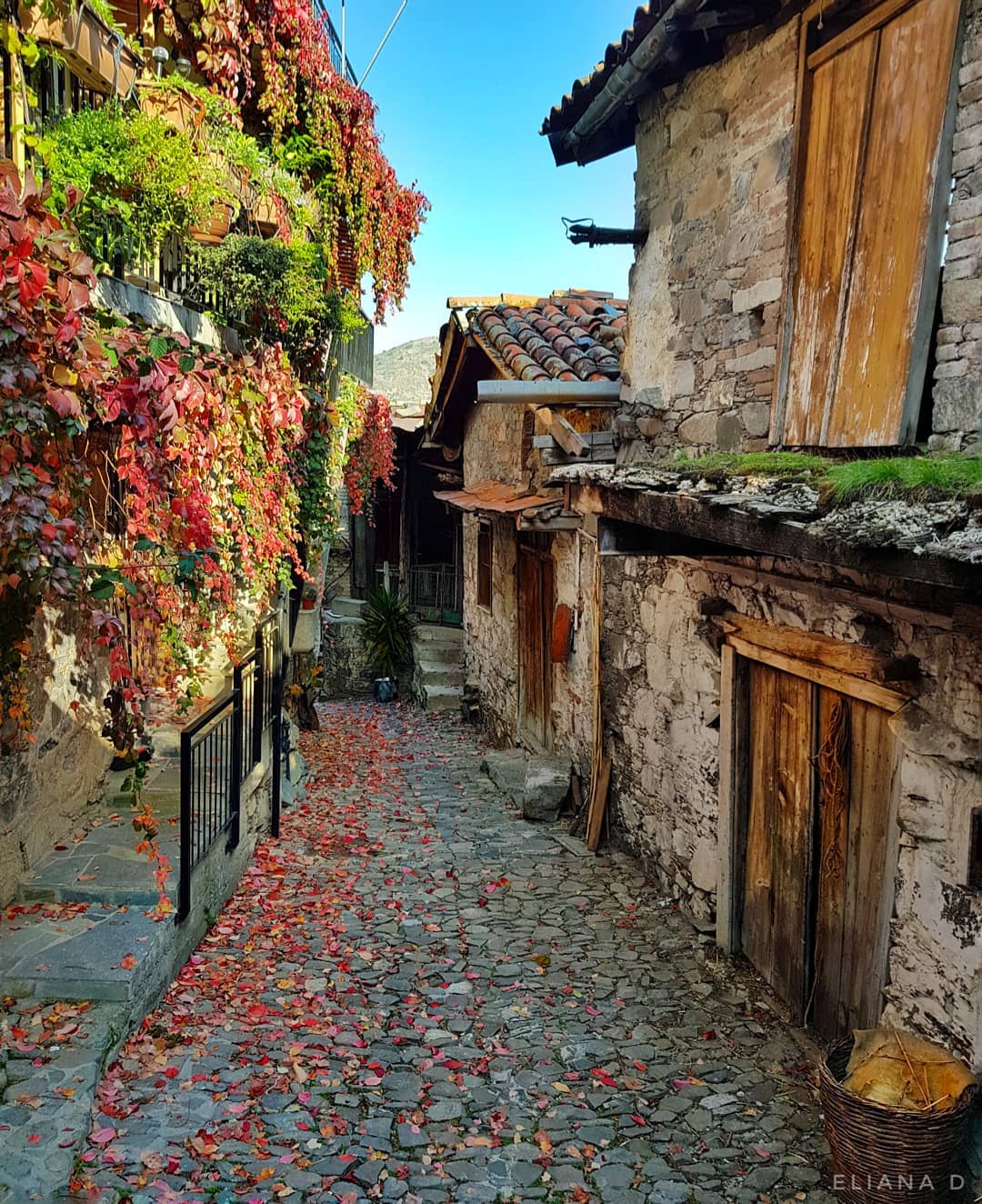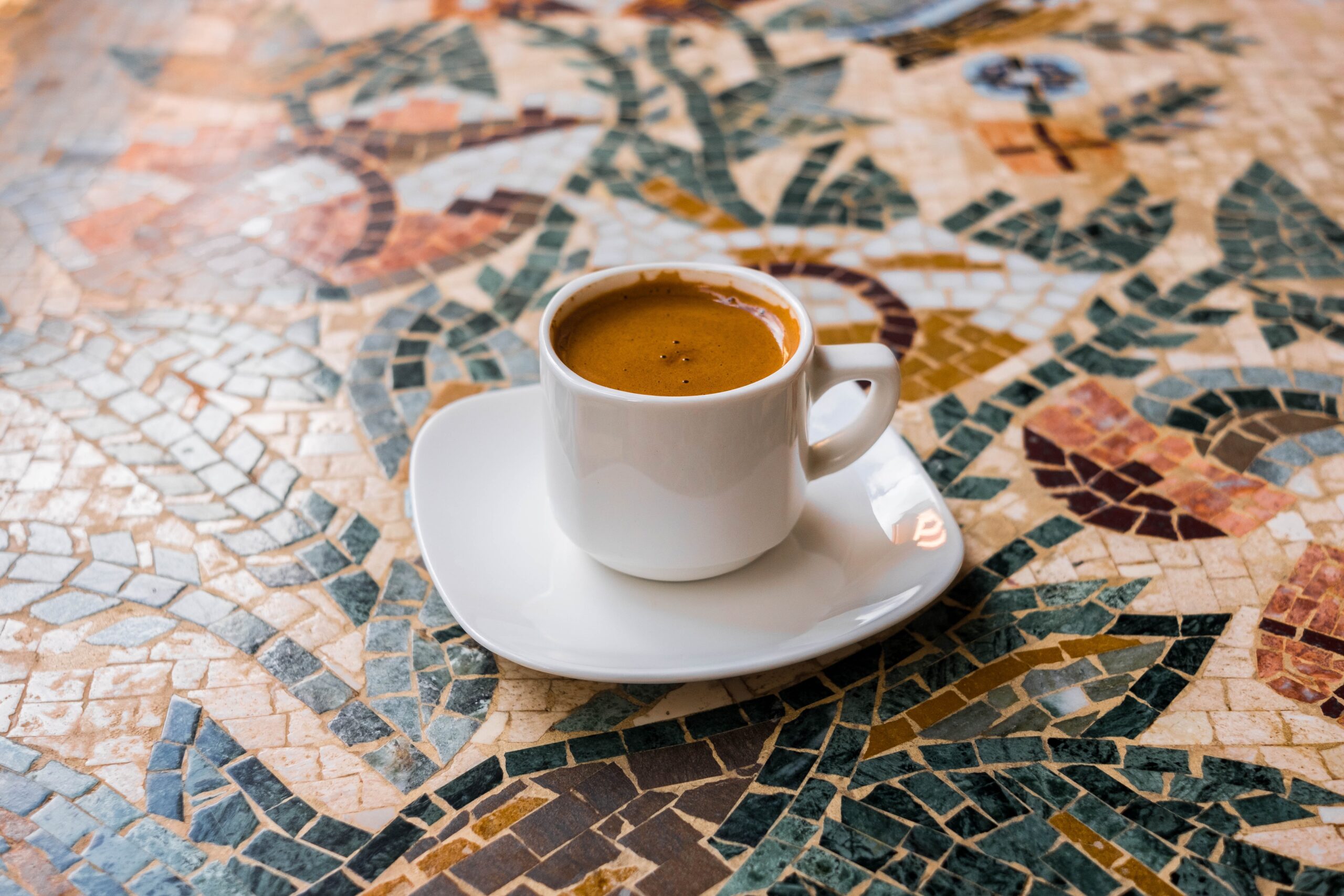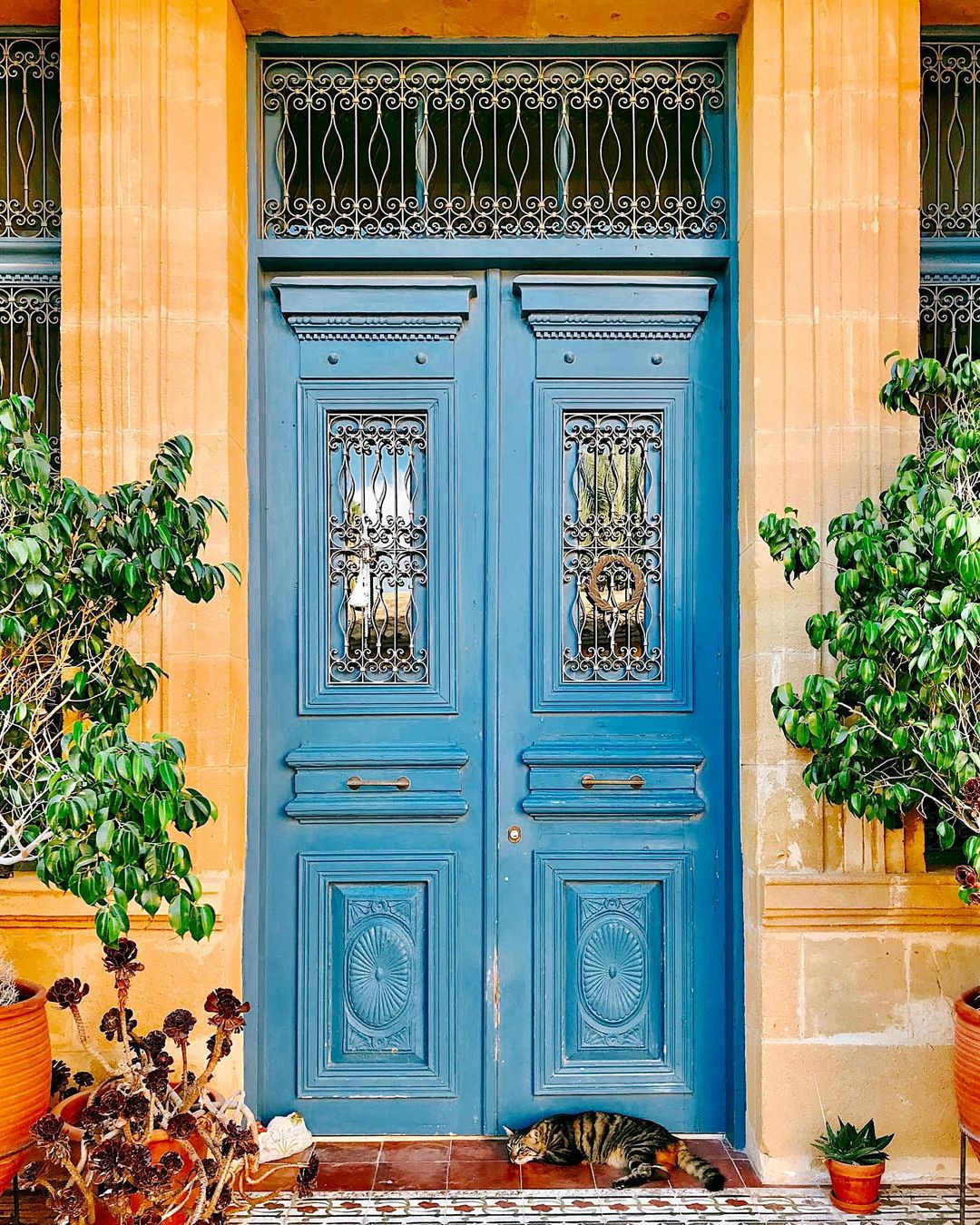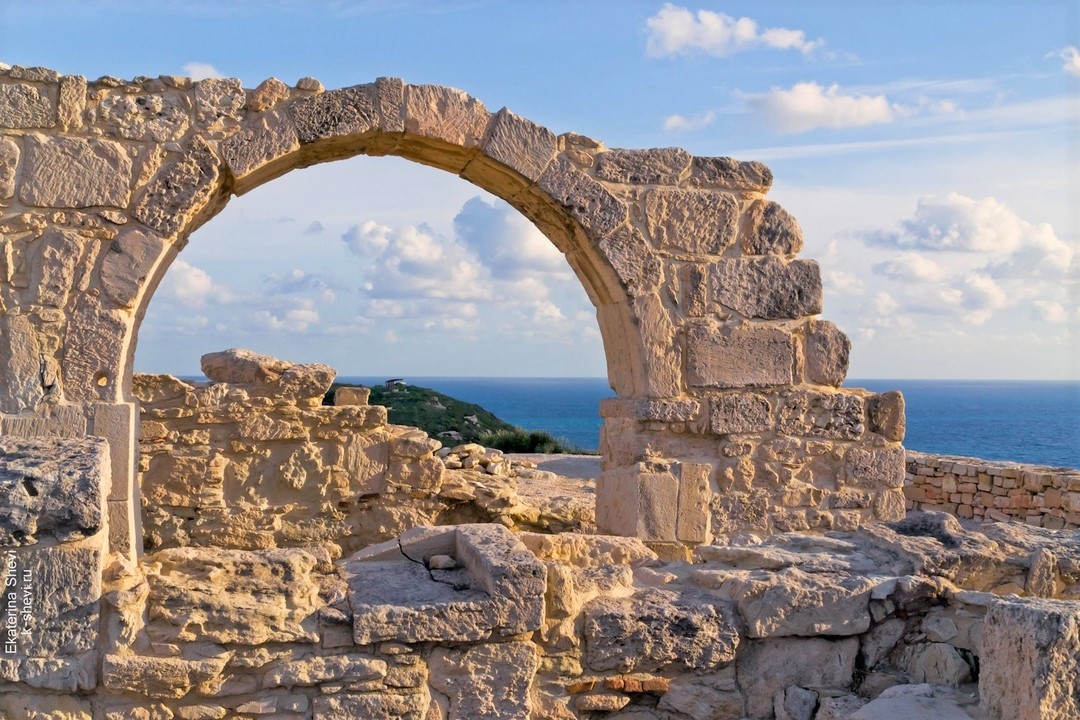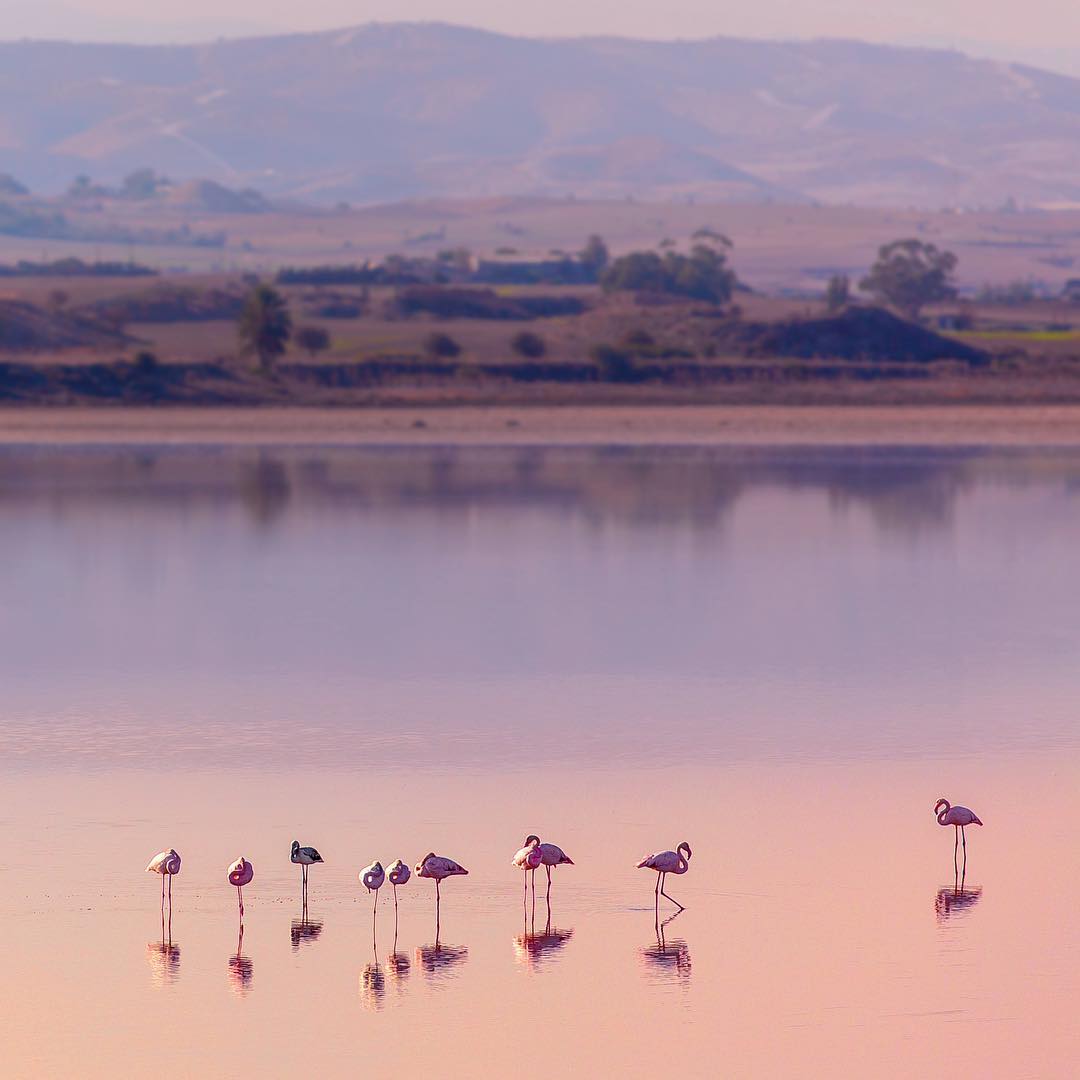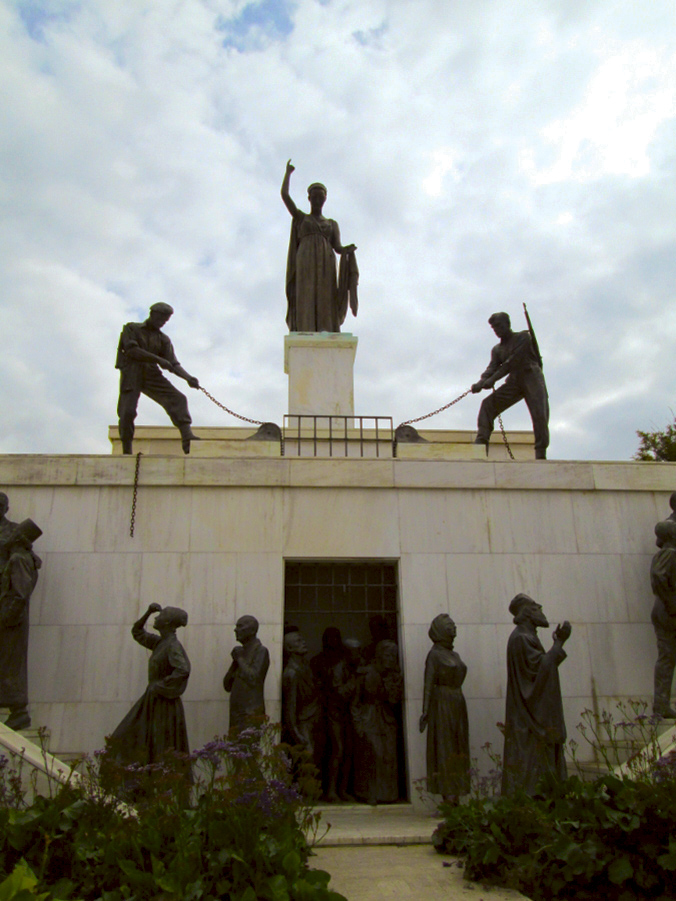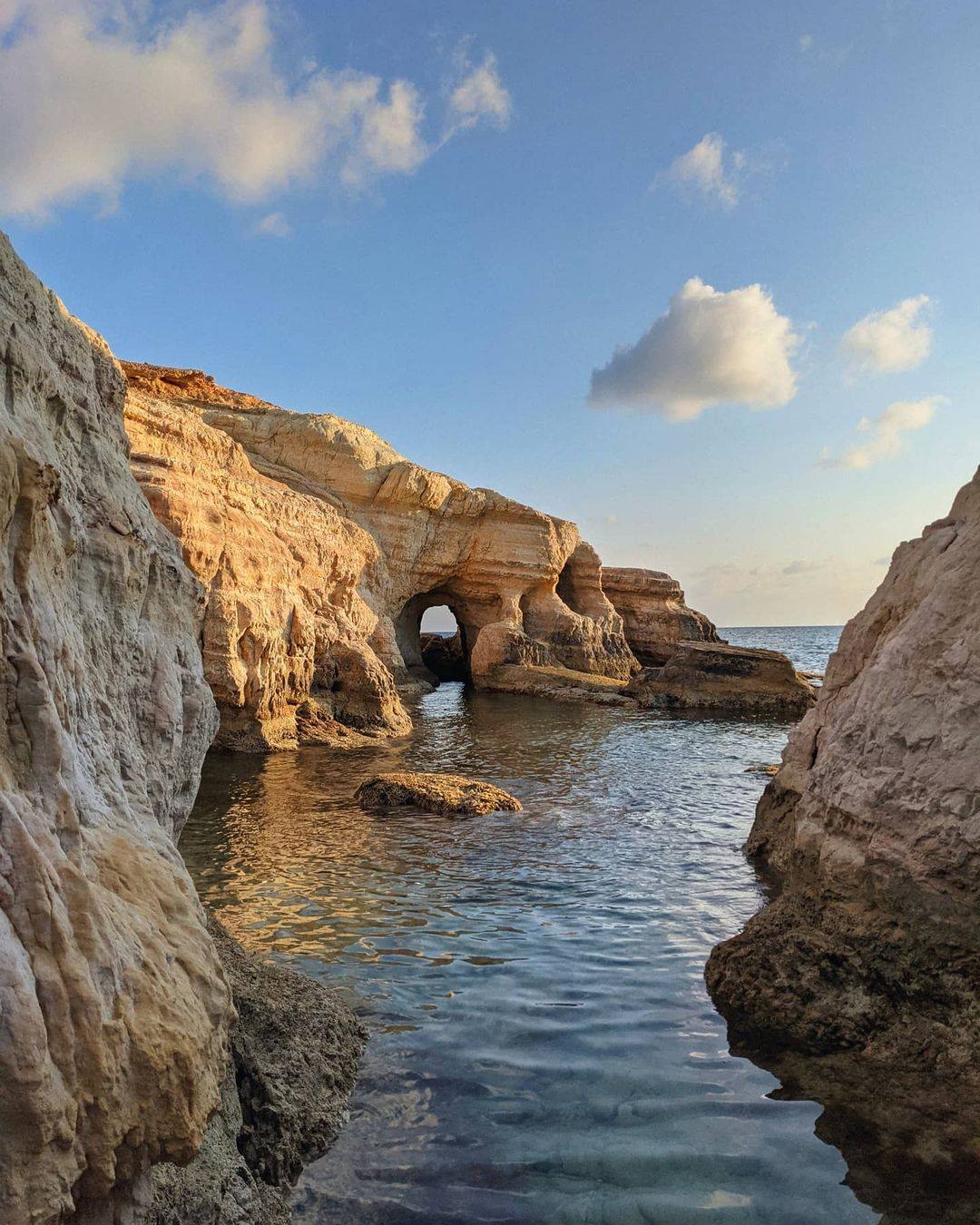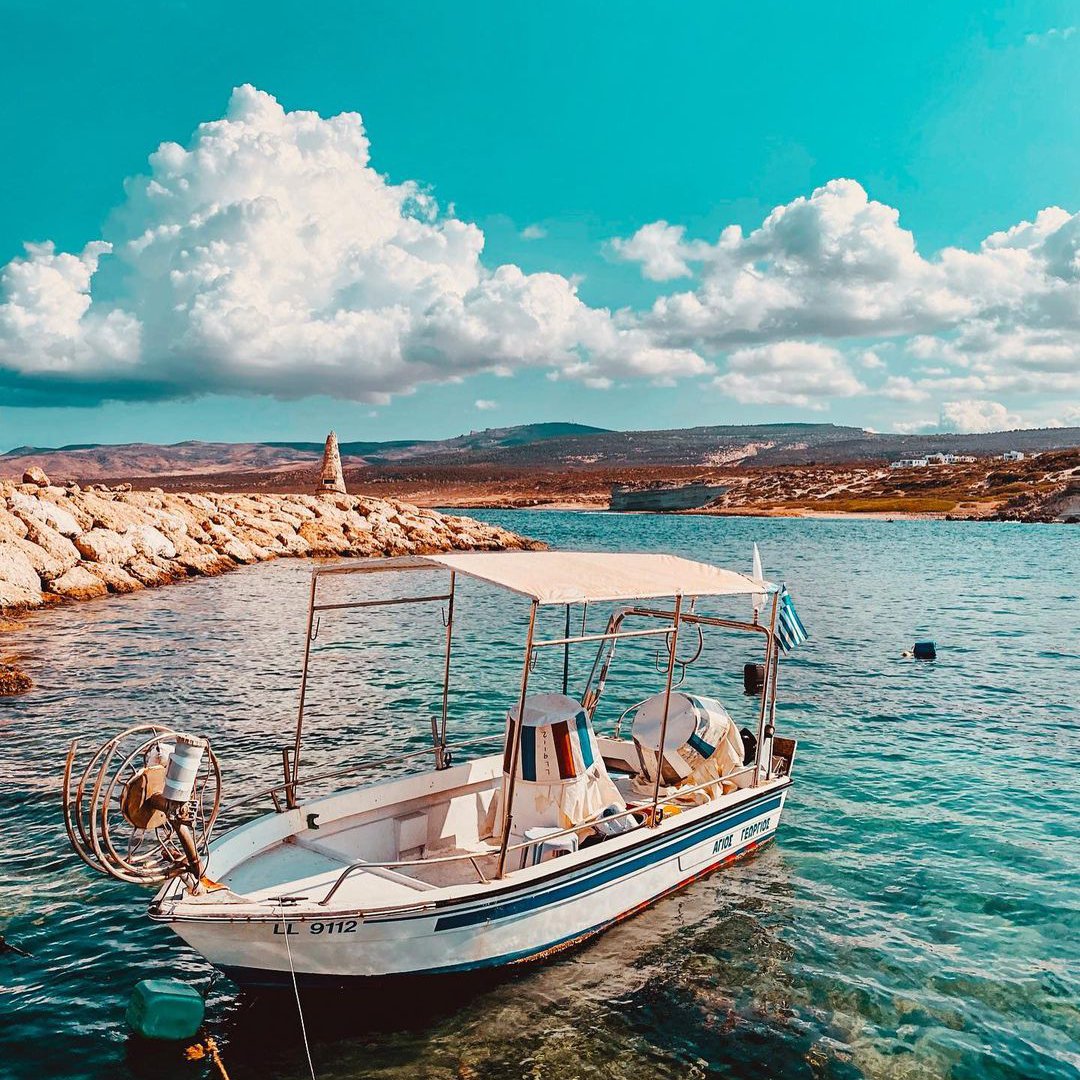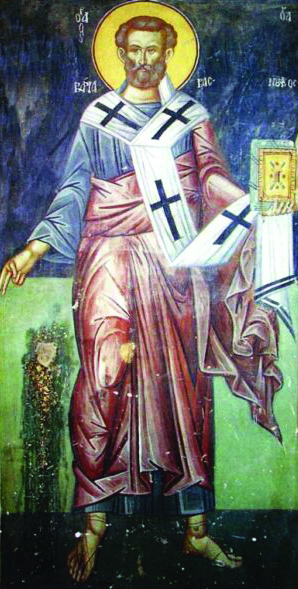About Cyprus
About Cyprus
Cyprus is situated at the north-eastern end of the Mediterranean Sea, and it is the sunniest and third largest Mediterranean island. It is a Tourist destination all year round but especially in the Summer months it attracts tourist thrice the number of its population. Crystal clear seas along with tidy and neat beaches, which are amongst the cleanest in Europe, make visitors feel like they are in a place blessed by nature. From the warm sea coasts, in an hour’s drive, you can easily reach the fresh and cool air of the Troodos mountains, famous for their geology and the rich cultural attractions. Very attractive are also the picturesque traditional countryside villages, offering the warmest hospitality, the Mediterranean healthy cuisine and fine local wines and beer. Cyprus enjoys mild winters, longer summers and short autumn and spring periods. This typical Mediterranean climate is attractive, especially to Europeans wishing to escape from cold weather in their home countries.
Cyprus owes much of its rich nature and culture to its history. Scientific findings prove that Cyprus emerged out of the sea, more than 92 million years ago. Likewise, the mythical Greek Goddess Aphrodite emerged out of the sea of Paphos. At first, the Troodos mountains were formed, 8000 meters below sea level. After a series of unique and complex geological processes, this deepest layer of a section of oceanic crust and the Earth’s upper mantle, evolved upside down. About 20 million years ago, Troodos and the whole island started its slow uplift to its present elevation. Troodos’ most complete and best-studied ophiolite in the world, along with all kinds of stones, metals and minerals, as well as the luxuriant flora and fauna of the area can be explored at the Troodos Geopark Visitor Centre.
In Cyprus you can trace all the known prehistoric and historic periods. Cyprus was settled by humans in the Palaeolithic period. The first Cypriots coexisted with various dwarf animal species, such as dwarf elephants and pygmy hippos. You can see their fossils in Thalassa Museum in Ayia Napa. Well organized collectivistic communities developed in the Neolithic period; the most important and best-preserved site of that period is Choirokoitia in Larnaca, which is a UNESCO World Heritage site worth visiting.
Greek settlers began to settle by 1300/1200 BCE, and led to the foundation of Greek city-kingdoms. The Greek language, civilization and identity has been established in Cyprus since then. The Greek Kingdoms followed formed part of the civilization of Ancient Greece in Classical, Hellenistic and Roman times. One can discover and admire antiquities from these periods in the Archaeological Museums of every modern city, as well as in numerous preserved archeological sites. Artifacts from Cyprus form collections in the greatest museums of the world. Kourion in Limassol, one of the most important Greek city-kingdoms of Cyprus in antiquity, can still be admired for its impressive remains, amongst them a magnificent Greco-Roman theatre that is still in use, mosaic floors of houses and public buildings, a 4rth century
Christian Basilica etc. In Paphos there is another UNESCO World Heritage Site, which will definitely amaze you with its ancient floor mosaics. They are considered amongst the finest in the world, portraying the legends of gods, goddesses, and heroes, as well as everyday scenes of Greco-Roman life.
The most significant event in the Roman period was the introduction of Christianity to the island by the Apostles Paul and Barnabas, accompanied by Mark the Evangelist, who established the Church of Cyprus, in 46 AD. This is well documented in the Bible, in the book of the Acts of the Apostles, making Cyprus the first Christian Church established outside the Holy Land, on European soil, and the third oldest Christian Church in the world, following Jerusalem and Antioch. Cypriots became Christian Orthodox and in each Greek city, see of a Bishop, grand basilicas were erected. Smaller churches were founded in every community of the island. Cyprus carried of being an integral part of the Greco-Roman-Byzantine world. This can be confirmed – and may easily traceable – by the Byzantine metropolitan art of the highest quality, found in churches dated of that period. A remarkable mosaic of the 6th century in Panagia Angeloktisti at Kiti, near Larnaca, is the best example of Byzantine art of that era, comparable to works at Ravenna, Italy. The Troodos mountain range hosts one of the largest groups of churches and monasteries of the former Byzantine Empire, to be found in Cyprus. Ten of them are included on the UNESCO World Heritage List. Beautiful and richly decorated with unparalleled frescos, they provide an overview of Byzantine and post-Byzantine painting in Cyprus and bear testimony to Cypriot’s Christian faith.
During the first and for most of the time of the second millennium AD, mostly due to Cyprus’ strategic position, many conquerors desired Cyprus. Lusignans, Venetians, Ottomans, British occupied Cyprus successively from 1192 until 1960. The Bellapais Abbey, in Kyrenia and Gothic Architecture in Nicosia and Famagusta, the Venetian walls in Nicosia, the Hala Sultan mosque in Larnaca, the Presidential Palace, are all monuments that represent these conquests. Throughout this long period of foreign rule and suppression, the Church of Cyprus, remained the only stable institution directly connected with the people. Further to its spiritual mission it was called to play a national/ethnic, a political and an economic role. For twenty centuries, now, the Church of Cyprus has ministered to the needs of Greek Cypriots in the realms of religious, cultural and family life. The Theological School of the Church of Cyprus is the latest of the educational institution established by the Church of Cyprus.
In 1960 Cyprus became an independent Republic, following an anticolonial struggle between 1955-59. However, tensions between the Greek and Turkish Cypriots that emerged in the late 50’s, during the anticolonial struggle, resulted in the Cypriot Conflicts of 1963/64 and 1974. The island was invaded by Turkey, in 1974, following a Coup d’etat by the military junta of Athens, and has been partitioned de facto ever since. Approximately 38% of the territory of the Cyprus Republic is occupied by Turkey which formed a sovereign entity, in 1983, recognized only by Turkey, in violation of international law. Almost 200.000 Greek Cypriots were forced to abandon their homes and many people were killed. Both Greek Cypriots and Turkish Cypriots (around half of the population) became refugees in their own land, following a forceful exchange of populations. Long negotiations regarding the reunification of Cyprus have been conducted ever since, but have produced no final result. Since 2003, Turkey had agreed for the opening of checkpoints on the cease fire line, allowing people on both sides to visit their homes and one another. This has revived hopes on people on both sides for a peaceful solution to the Cyprus problem, as old friendships were revived and new friendships were formed. Co operation re-emerged in many fields especially on bi-communal cultural issues.
A great achievement of the Republic of Cyprus is that the whole island became an official member of the European Union since 2004. This offers a new framework for a peaceful and lasting solution.
Nowadays, the Republic of Cyprus can be considered a multicultural modern European society, which is recovering from the coronavirus circumstances, like everybody else and can enjoy the realms of a vibrant life. Cypriot people are very friendly and hospitable, always with a smile, making visitors feel like home.
We are looking forward to welcome you in Cyprus and offer our warmest hospitality!
Geography
Cyprus is the third largest island in the Mediterranean, after Sicily and Sardinia, with an area of 9.251 sq. kms (3.572 sq. miles).
It is situated at the north-eastern corner of the Mediterranean, at a distance of 300 km north of Egypt. The Greek island of Rhodes lies 360 km to the north-west.
Cyprus’ coastal line is indented and rocky in the north with long sandy beaches in the south. The north coastal plain, covered with olive and carob trees, is backed by the steep and narrow Pentadaktylos mountain range of limestone, rising to a height of 1.042 m. In the south, the extensive mountain massif of Troodos, covered with pine, dwarf oak, cypress and cedar, culminates in the peak of Mount Olympus, 1.953 m. above sea level. Between the Troodos range and the Pentadaktylos mountain range lies the fertile plain of Messaoria. Arable land constitutes 46.8 per cent of the total area of the island. There are no rivers, only torrents which flow after heavy rain.
Demography
The population of the Republic of Cyprus is 952.100 (2012) of whom 681.000 belong to the Greek Cypriot community, (71,5%), 90.100 (9,5%) to the Turkish Cypriot community (estimate) and 181.000 (19,0%) are foreign citizens residing in Cyprus. The language of the Greek Cypriot community is Greek and the community adheres predominantly to the Autocephalous Greek Orthodox Church of Cyprus. The language of the Turkish Cypriot community is Turkish and the members of the community are Sunni Muslims.
History
The earliest presence of human beings in Cyprus dates back 10,500 years. Noteworthy from the prehistoric period are a burial dating back to 7,500 BC, which contained the remains of a cat, making it the earliest evidence of feline domestication in the world and the Neolithic settlement for Choirokoitia, which dates back to 6,800 BC and is a Unesco World Heritage site.
The introduction of copper made Cyprus one of the most important exporters of the metal in the Middle East and beyond and during this time we find Cyprus being mentioned in letters between its kings and the kings of Egypt, the Hittite kingdom and the kingdoms of the Levant. It is during the second millennium BC that contact with the Minoan civilization and then the Mycenaeans from Greece brought the first waves of Greek colonization to the island. By the end of the second millennium BC the Greek identity was firmly established on the island. This is also the time that the modern name, Cyprus (Κύπρος in Greek), appeared for the first time.
Other peoples from the Levant, like the Phoenicians, Assyrians, Egyptians, and Persians interacted with Cyprus, either by setting up trading posts or by bringing Cyprus under their direct or indirect control. Alexander the Great seized the island in 333 BC and subsequently it was passed on to Ptolemaic Egypt and then Rome. Christianity was preached in Cyprus by Apostle Paul in the first half of the first century AD and it is said that the Roman proconsul of Cyprus, Sergius Paulus, converted to Christianity, becoming the first Christian ruler. Christianity remains the predominant religion on the island.
The island then passed to the Eastern Roman Empire in 330 AD. The island was invaded by the Arabs in 649 AD and from 688 AD it was considered a condominium between the Byzantines and the Arabs. This lasted until 965 AD when the Arabs were defeated by the Byzantine Emperor Nicephorus II Fokas. In 1191 AD King Richard the Lionheart conquered Cyprus and sold it to the Knights Templars who, in turn, sold it to Guy de Lusignan, the former King of the Kingdom of Jerusalem. He was the first King of the Frankish dynasty which ruled Cyprus until 1489 when the widow of the last king, Catherine Cornaro, abdicated her throne in favor of the Republic of Venice. In 1570 the Ottoman Turks invaded Cyprus which fell after a year of fighting. The Ottoman occupation lasted until 1878 when Cyprus became a British Protectorate and, from 1925, a Crown Colony.
After an armed struggle by the Greek Cypriots in 1955-59, the island was granted independence in 1960. In 1974 Turkey invaded the north of the island in response to a coup which overthrew the elected president of the Republic of Cyprus and has been occupying 37% of the island since. This resulted in the mass displacement of 160,000 Greek Cypriots to the south and 40,000 Turkish Cypriots to the north. Today the island is a European Union Member State, but the northern part is not controlled by the internationally recognized government of the Republic of Cyprus.
Cypriot Flag
The flag of the Republic of Cyprus was defined in 1960 when Cyprus became an independent sovereign state.
The background is white with a copper-coloured (pantone 1385 C) silhouette of the map of Cyprus in the centre of the flag, above two crossed olive-green-coloured (pantone 574 C) olive branches. The copper colour has a dual symbolism: first, the name of the island is said to derive from an ancient word for copper (Eteocypriot or Sumerian); and second, copper is closely associated with Cyprus since antiquity when the island became a major producer and supplier of this mineral resource. The olive branches are symbols of peace.
Climate
Cyprus has a Mediterranean climate: hot, dry summers from June to September and mild, wet winters from November to March, which are separated by short Autumn and Spring seasons. Sunshine is abundant during the whole year, particularly from April to September when the daily average exceeds eleven hours. Winds are on the whole light to moderate. Gales are very infrequent and heavy storms rare.
Snow hardly falls in the lowlands and on the northern range, but is a frequent feature, every winter on ground above 1.000 metres in the Troodos range. During the coldest months it lies in considerable depth for several weeks, attracting skiers.
Food and Drink
The food of Cyprus reflects the rich and turbulent history of the island and its indelible Greek culture. You will find tastes influenced by the Middle East, Asia Minor and the Venetians, all using fresh local ingredients, herbs and spices and olive oil. The Mediterranean diet, with its grains and pulses, sun-ripened fresh fruit and vegetables, high-protein fish, lean meat and poultry and wine, is a healthy option.
Cyprus is famous for its Hallumi chese which is made from goat milk and unlike other cheeses it can be cooked in a variety of ways without melting.
Cyprus has a long tradition in winemaking that goes back over 4,000 years. In ancient times wine was a major source of wealth for the island. The island supplied the Pharaohs of Egypt and Cyprus wines were in great demand amongst the ancient Greeks and Romans.
Commandaria is acknowledged to be the oldest wine in the world and was probably the first to be given an ‘Appellation d’Origin’(label of geographical origin). Legend says that Commandaria was originally made for Richard the Lionheart and the Crusaders. The dessert wine, which has a taste like sweet sherry, has been made using the same method for hundreds of years. The grapes are picked late, dried in the sun to enhance their sugar content and then pressed. The run-off is collected and fermented in tanks or in huge earthen ware jars. The sweet wine of Cyprus became known throughout Europe under the name Commandaria depicting its geographical origin “Commandarie” which was the name given to the land owned by the Knights Templar and later the Knights of St. John.
